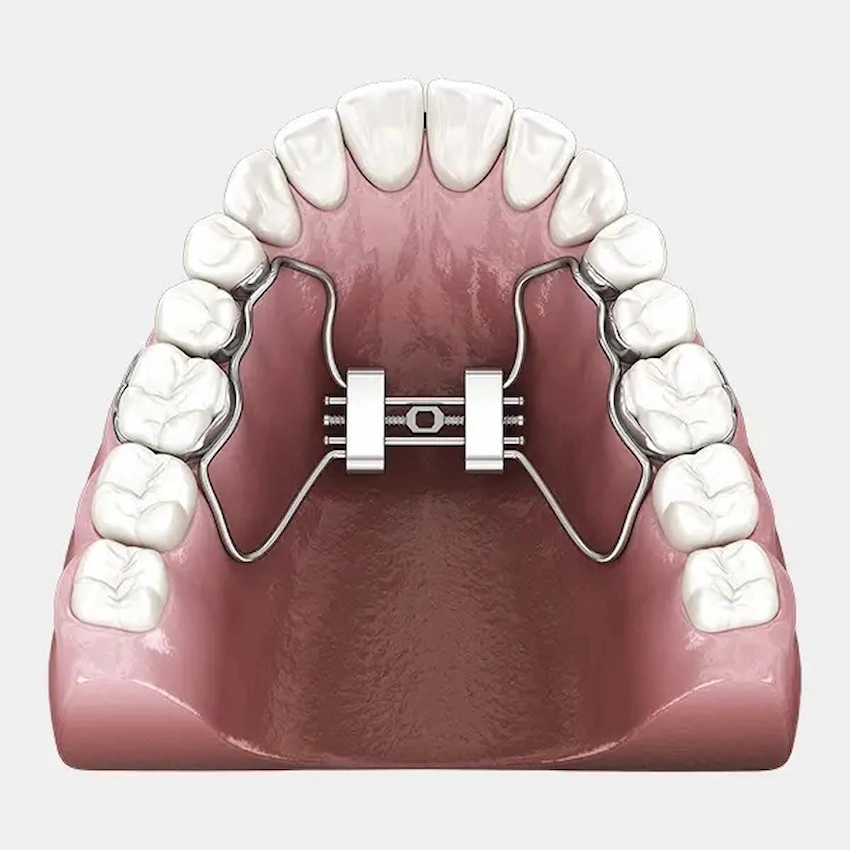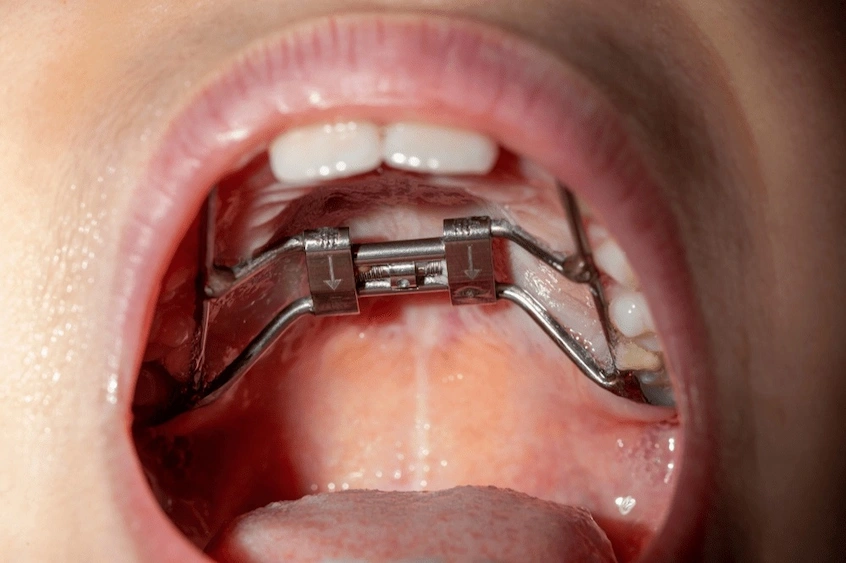🦷What Is Expander for Teeth?
An expander for teeth is a dental appliance that is designed to open the upper jaw and provide more space for the teeth. It is generally a unit for those who have a narrow upper jaw or a dental crowding problem.
Although an expander is mostly recommended for children and teenagers, in some cases, adults can also get a benefit from it. In this blog, we are going to discuss the questions such as what is an expander for teeth, how does it work, what are the benefits of using it, and what are the different types of expanders.
The duration of wearing the expanders is generally a few months, and the length of treatment depends on the patient’s age and the depth of the dental problem. What is an expander for teeth if not something to change our look? It is the metal framework that goes over the molars of the upper jaw which has a central screw that an orthodontist turns in order to widen the jaw slowly.
How Does an Expander for Teeth Work?
What is an expander for teeth in terms of mechanics? An expander operates by placing a light force on the bones of the upper jaw. It is usually made up of a metal band that goes around the back molars and a central screw. By the orthodontist regularly adjusting the screw, the upper jaw is slowly expanded through the separation of the two palate halves.
By modifying the expander, the upper jaw is released creating space, hence the teeth will have enough space to align properly. What is an expander for teeth in terms of comfort? Initially, the device might come off as a little uncomfortable, but the pressure is not much and it is applied gradually so that discomfort will disappear soon after a short period of adaptation.
Types of Expanders for Teeth

An orthodontist can pick a particular type of expander depending on his patient’s condition. What is an expander for teeth in terms of the different types? Some of the most common types of expanders include:
- Rapid Palatal Expander (RPE): The rapid palatal expander is the most popular expander and it is intended to increase the upper jaw quickly. The RPE consists of a central screw which is turned step by step in order to achieve the widening of the palate that is usually done in a few months.
- Slow Palatal Expander (SPE): The slow palatal expander unlike the RPE is a device that works more slowly and steadily to enlarge the upper jaw. Although it requires more time to achieve the desired effect, it is usually applied in the cases of adults or those having a more complicated dental problem.
- Haas Expander: This is an apparatus similar to the RPE but is different in terms of design. Both the screw and the wire mechanism are used to widen the palate, thus making a more comfortable product for some users.
- Hyrax Expander: This is one of the fast palatal expander type that is often used in the case of serious conditions. It is the most efficient way of getting fast space and jaw widening thus the correct alignment of the teeth.
- Creates Space for Proper Alignment: An expander creates enough space for permanent teeth to grow in a proper way, thus it lessens the chance of extractions in the future.
- Corrects Crossbites: A crossbite is a dental condition where the upper teeth are not aligned with the lower teeth, which can not only cause discomfort but also can result in other dental problems. A bite corrector by slowly widening the upper jaw can solve this problem by changing the unbalanced position of the jaws to the right one.
- Improves Breathing: In case the upper jaw is too narrow it will likely cause the nasal passage to be narrowed as well, hence the airflow is restricted. The expander by the process of jaw expansion can help nasal breathing to get better and thus breathing problems will decrease.
- Prevents Crowded Teeth: A narrow upper jaw causes the teeth grow in crowded and this makes it even harder to keep your mouth clean. Thus by the process of jaw expansion, an expander can help in the removal of enough space so as the teeth can be properly aligned.
How Long Do You Need to Wear an Expander for Teeth?

What is an expander for teeth in terms of treatment time? The duration of wearing an expander is, however, dependent on the patient’s individual treatment plan. Generally, the patient is expected to wear an expander for a few months during which the orthodontist will come for adjustment every few weeks in order to gradually open the upper jaw.
A younger patient can accomplish the treatment in a shorter time because his/her bones are still growing and hence the pressure from the expander can elicit a quicker response. On the other hand, the method for adults will be longer as the jaw bones are fully formed and thus it will take more time to shift the bones apart.
The expander will generally be kept in place for a time after it has effectively increased the width of the maxilla, to maintain the new jaw shape. Meanwhile, additional orthodontic treatments like braces can be employed to achieve the complete alignment of the teeth.
FAQs About Expander for Teeth
An expander basically applies gentle pressure on the bones of the upper jaw to increase their width with time.
I mean a mouth expander probably will make a little discomfort or a sense of pressure but just for a few days after adjustments and most of the times the pain will be temporary and manageable.
Kids typically receive an expander at the age of 7 to 14, which is the time when their jaw is still growing and can be changed more rapidly.
A dental expander is a teeth straightening appliance that, by extending the upper jaw, solves the problem of a bite and creates space for teeth that are crowded.
Usually, teeth expanders are retained for 4 to 6 months so the jaw can be expanded and the new position can be stabilized.
References:
American Association of Orthodontists. (2020). Palatal expanders: Treatment for narrow upper jaws. Retrieved from https://www.aaoinfo.org
Mayo Clinic. (2020). Orthodontics: Palatal expansion and tooth alignment. Retrieved from https://www.mayoclinic.org
WebMD. (2021). What is a palatal expander and how does it work? Retrieved from https://www.webmd.com




